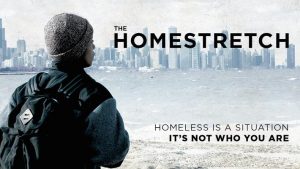What is the social impact of watching a documentary with other people—if each person is watching from a different computer or phone, potentially throughout the country or even the world?
OVEE, an online viewing platform and tool created by the Independent Television Service (ITVS), allows viewers to watch together from multiple viewing locations, and also chat, answer poll questions and register their experienced emotions and reactions with the help of emoticons that can be activated and displayed at any moment in the viewing experience. A new CMSI study, “Connecting Audiences with OVEE: An Assessment of The Homestretch PBS Documentary,” examines the role of OVEE as a simultaneous synchronous viewing platform for documentary and other media storytelling. Specifically, the study assesses OVEE as an evaluation tool by examining the viewing impact of an OVEE screening of The Homestretch, an independent documentary film about homeless youth in the American education system. The study was directed by CMSI co-director Caty Borum Chattoo and written by Borum Chattoo and CMSI fellow and MFA student Casey Freeman Howe.

The Homestretch premiered on PBS’ Independent Lens strand in April 2015, as one in a series of programs supported by American Graduate, a public TV project launched by CPB to support boosting graduation rates. It powerfully tells the story of several homeless teens who successfully graduate, with help from dedicated teachers. In September 2016, The Homestretch was awarded with an Emmy Award for “Outstanding Business and Economic Reporting: Long Form.”
As a foundational premise, the CMSI team was interested in examining the extent to which OVEE is able to work with multiple data streams – survey data, online chats, and articulation of emotion in different scenes of the story.
“There is no one way to examine the potential audience effect from watching an intimate documentary story, of course, and the core research methods in communication-focused social science and market research are valuable: surveys and experiments, focus groups, dial testing,” said Borum Chattoo, the study’s lead author. “In the case of OVEE, which offers the ability to gather three kinds of data – survey data, focus group data through online chats, and dial testing through emoticators – we wanted to assess the extent to which the tool can be used not only as a viewing platform, but as an evaluation tool. In addition to providing the evaluation of the film itself, this study provided strategic recommendations to the ITVS team about how to better optimize OVEE as an evaluation tool. As of the time of this study’s publication, OVEE incorporated all of our suggested technology and data updates to allow the tool to be used by other strategists and researchers who want to know more about the impact of social-issue documentaries.”
Study Highlights:
CMSI researchers used the OVEE platform to ask questions about what viewers found most compelling about The Homestretch. They also asked viewers how likely they were to use the documentary in their professional lives, and which parts of the film were most beneficial to their work among other vital questions.
Some 322 federal, state, and local experts who contend with the issue of homeless youth viewed the documentary through OVEE. Through the use of emoticons, viewers were able to react to each moment or scene by selecting icons that include: scared, dislikes, laughs, angry, cries, likes, claps.
Fifty-four percent of viewers indicated that they found the online screening very useful as a forum to discuss social issues. Only 2 percent of viewers believed that it was not useful. Seventy percent of viewers said that the most valuable part of the viewing experience was the ability to bring people together from different places. Experts on homeless youth were able to share an experience; experts across 40 states and the District of Columbia were able to share their thoughts with each other.
The intimate, emotional stories of the teens themselves were what created the strongest connections to the audience. The audience engaged more with the stories of the teens and their victories toward in overcoming their situations. The discussion audiences most wanted to have was about promising solutions to teen homelessness, rather than the just the problem.
Future social campaigns based in storytelling may benefit from using OVEE to help audiences focus on solutions to the problems they jointly address. CMSI continues to evaluate social issue media projects – through different investigation approaches – in order to promote the growth of the field.
Note: CMSI co-director and study co-author, Caty Borum Chattoo, will join ITVS’ Sharan Sklar to present the study approach and findings on October 27, 2016, at the American Evaluation Association’s annual conference in Atlanta, Georgia.
